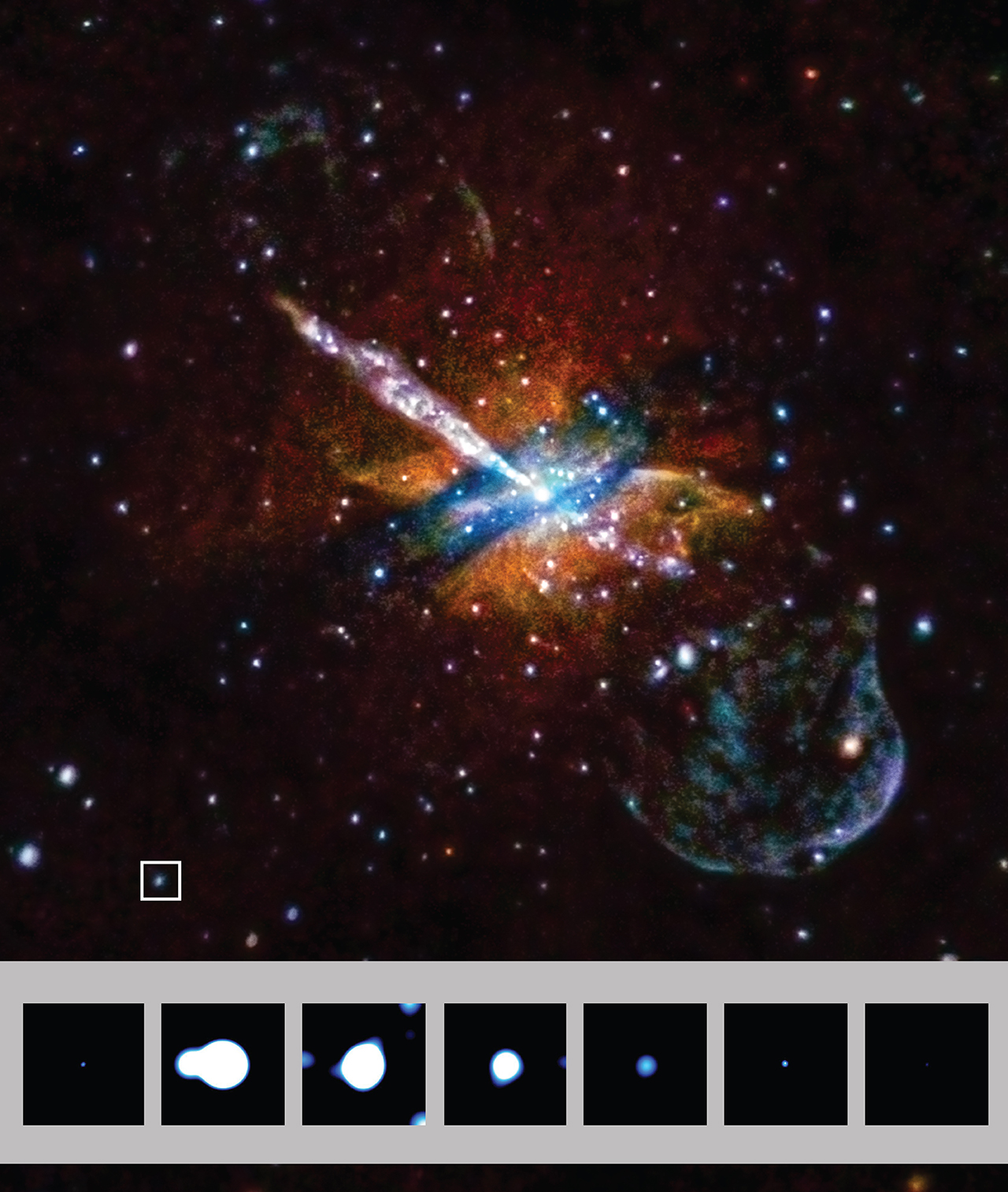Monster Flares in Otherwise Ordinary Extragalactic X-ray Binaries'

Jimmy Irwin
We are pleased to welcome Jimmy Irwin as our guest blogger today. Jimmy is the first author of a new Nature paper describing the detection of two mysterious, flaring X-ray sources in Chandra data. Irwin is an associate professor at the University of Alabama. After obtaining his PhD from the University of Virginia, he was a postdoc, a Chandra Fellow, and a research scientist at the University of Michigan. He studies the X-ray binary and hot gas content of galaxies, as well as the hot intracluster medium of groups and clusters of galaxies.
Projects don't always turn out the way one expects them to. Sometimes the result is uninteresting, but other times they far exceed expectations. Our project began as an undergraduate endeavor for two students looking to work on a project for college credit. A third student, who was a friend of one of the students, joined the project just for fun.
The original idea was to look for additional examples of black hole X-ray binary candidates in globular star clusters of nearby galaxies. The hallmarks for finding such candidates are (1) a high X-ray luminosity (brighter than a neutron star binary should reach), and (2) significant time variability of the energy output of the system (to rule out many fainter X-ray sources masquerading as a single bright source). Since our ideal candidates would vary by factors of more than three within a given Chandra observation, there was a timing element to our analysis. The undergraduates began plowing through the available Chandra archival data of the nearest elliptical galaxies, which contain a large number of globular clusters.
On several occasions, the undergraduates excitedly came to me with potential candidates, but a quick search of the literature revealed that these sources were already known and documented. But at least they were finding what the routines were intended to find. Eventually they found a luminous, variable source in the galaxy NGC 4636 whose variability had not been previously noticed. Not only was the source variable, it was extremely variable. Throughout most of the Chandra observation, the source emitted at a modest rate of one photon every 500 seconds, still a moderately luminous X-ray source given its distance. But a brief period after the observation began, the count rate ballooned by a factor of 125, with six photons detected in just 22 seconds. The flare then died away over the course of a half hour or so back to its baseline level. The X-ray luminosity of the source during the peak approached 1 x 10e41 ergs/s, or about 30 times the X-ray luminosity of the entire Milky Way Galaxy. The host of the flare is a red, rather faint globular cluster within NGC 4636.
A few weeks later, the undergraduates came to me with a similar object, this one in the nearby galaxy NGC 5128 (Centaurus A). When not flaring, the source has a quite unremarkable X-ray luminosity of 4 x 1037 ergs/s. However, when it flares, its energy output increases by a factor of 250 initially, and then decays back to its persistent level in about an hour. This source is spatially coincident with a bright object that appears to be either a globular cluster in NGC 5128, or an ultracompact dwarf galaxy orbiting NGC 5128.
The undergraduates eventually moved on to other phases of their lives, but the project continued. Inspection of other X-ray data did not yield any further flares for the NGC 4636 source, but three more flares observed with Chandra, another observed with the XMM-Newton observatory, and another with the Swift observatory were found for the NGC 5128 source over seven years worth of data. Given the total amount of exposure time on the source, the six flares indicate that the flares occur once every 1.6 days or so, if the flares can be assumed to be periodic.
Interpretation of these sources has proved to be more difficult than their detection. The number of classes of astronomical objects that vary by factors of at least 100 on time scales of less than a minute that do not destroy themselves (e.g. gamma-ray bursts and supernovas) is quite small, and if limited to events more energetic than the classical luminosity limit of a neutron star (few x 1038 ergs/s), the list reduces to only soft gamma repeaters (SGRs) and their cousins the anomalous X-ray pulsars (AXPs) observed in our Galaxy, both of which are believed to be young, highly-magnetic neutron stars.
While our newly-discovered flaring sources resemble SGRs/AXPs in their energetics, they are quite different in other ways. SGRs/AXPs that flare up to 1 x 1040 -1 x 1041 ergs/s only last a few seconds to a few tens of seconds, much shorter than our sources' hour-long flares. Thus, SGRs/AXPs release much less energy per flare than our sources. In addition, SGRs/AXPs are very faint when they are not bursting -- we would not have even detected our sources in their non-flare state at their great distances if they were SGRs/AXPs. Finally, the location of our sources is all wrong. If SGRs/AXPs are young, highly-magnetized neutron stars as is believed, the last place one would find them would be in a very old stellar population such as a globular cluster or red ultracompact dwarf galaxy.
So it appears that our sources represent a genuinely new category of astronomical phenomenon. Perhaps not a new type of object per se, but a known object doing something we have not seen before. There are three broad possibilities for what these objects may be: a neutron star of stellar-size black hole that is temporarily beating it maximum limit of energy output for brief periods of time, an intermediate-mass (100 - 10,000 times the mass of our Sun) black hole, or an object that is beaming X-ray emission along our line of sight every about ~1.6 days like a lighthouse beacon. The lighthouse beacon explanation probably doesn't work, as it does not explain the very asymmetric fast rise/slow decay pattern of the flare. The intermediate-mass black hole scenario is intriguing, especially given the fact that the NGC 5128 host could be the stripped core of a dwarf galaxy. If it is, it might be expected to harbor a black hole in its nucleus that is less massive than the supermassive black holes found in the nuclei of larger galaxies.
It's worth noting that the Chandra data for the first NGC 4636 and NGC 5128 were taken in 2003 and 2007, respectively, and sat in the data archive undiscovered for a decade or so. One can only wonder what other discoveries await in the archives.

